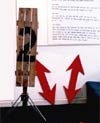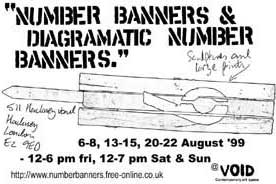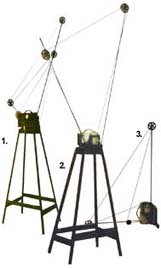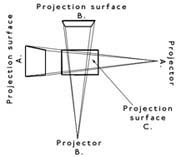 Century gallery
Century gallery
Cremer Street, London, E2 8HD
Apr 9 – 19, 2003
An exhibition of arrow installations.
Using scenarios gleaned from Music hall lyrics and pros I used my Number banners to explore a local historical feature in this part of East London.
The Century gallery exhibition was an exhibition of coloured arrows accompanied by text.
Arrows mapped out the movement and actions of scenarios described in old music hall songs. As situations, such as going up in a balloon, we described in a song, the arrows illustrated the movement and attitude of people and characters.
The overall effect was to create a feeling of action and dynamism that was described in the songs.

The four music hall songs
I chose two music hall songs: “Up in a balloon” and “The Valet”.
Artist’s statement
Paul Doeman is a London-based artist, whose artwork is both urban and conceptual in style. Paul creates work in all media, including two and three dimensions; art and its creation can be seen as the use and application of tools. It is possible for the tool to become the subject art, and, it with this in mind, Paul uses situations, scenarios and stories to imbue life into tool-like art objects.
Calling on various themes for the subject of his work, which is often tool-like and practical in both purpose and appearance, Paul has exhibited at numerous solo and joint exhibitions. ‘Number Banners’ have frequently become the subject of area-specific installations at art galleries throughout England; this is also true of the Century gallery show.

Century gallery exhibition: “Music hall situations”
Using scenarios gleaned from Music hall lyrics and pros, Paul has again used Number banners to explore a localised feature.
The history of Music hall has strong ties with the area of East London where the Century gallery is situated.
Before the popularity of TV, Radio and the growth of the WWW, Music hall was one of the ways in which East Londoners relaxed and enjoyed themselves; popular Music hall songs were the pop music of their day.
Applying Number banners to Music hall scenarios illustrates, and takes literally the words of the entertainment and assumes these things really happened, or at least, what happens when Number banners are used as a proxy on behalf of the art viewer and the artist.
If there is an art form to which Britain can justly and proudly claim to have given birth, it is the music hall.
“A living entity of boundless vitality, it was a child of dubious parentage, whose father was the drawing-room ballad – the soirée motto song – the nationalistic air, and whose mother was the folk tune – the raucous carouse – the tender love song. This enfant terrible had all the disadvantages of being born on the wrong side of the blanket, yet despite this, and perhaps even because of this, it thrived upon sentiments of every stratum of society in an age when Britain was awakening to the realization of Empire. The infant music hall had but one watchword – ‘flamboyance’ – fired by an innocent, and as yet uninhibited, passion.”
 Creative Space, Field Row, Worthing.
Creative Space, Field Row, Worthing.
















